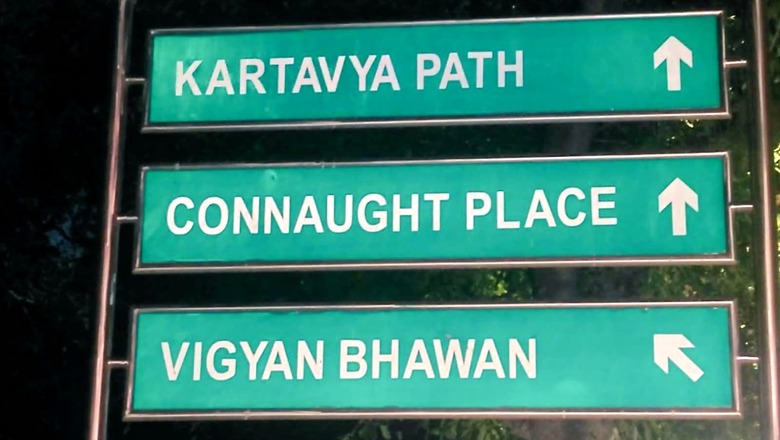
views
Prime Minister Narendra Modi will on Thursday inaugurate the newly renamed Kartavya Path, a stretch from Rashtrapati Bhavan to India Gate.
The government has said it symbolises a shift from the erstwhile Rajpath being an icon of power to Kartavya Path being an example of public ownership and empowerment.
The renaming of important and historic places in India did not start with the Modi government.
Early start
In fact, several landmark sites lost their British-era names soon after the occupiers left, as India sought to physically erase markers of the colonial legacy. This is not counting cities like Bangalore, Bombay, and Calcutta becoming Bengaluru, Mumbai, and Kolkata in post-Independence India.
For instance, South Parade in Bengaluru was changed to Mahatma Gandhi Road in 1948.
The Cenotaph war memorial in the city dedicated to the soldiers who lost their lives in the Anglo-Mysore wars was demolished in 1964 by the municipal corporation and the Cenotaph Road itself was renamed Nrupatunga Road.
Capital change
In Delhi, the names of landmark roads were changed — Kingsway to Rajpath and Queensway to Janpath.
Later, in 1995, the Congress-led government changed the name of the iconic retail hub Connaught Place to Rajiv Chowk. However, most residents would agree that the name has failed to stick, except for the Metro station in the area.
Other cities
In Kolkata, Dalhousie Square was renamed Binoy Badal Dinesh (or BBD) Bagh. Minto Park became Shaheed Bhagat Singh Udyan.
Under Shiv Sena’s rule, several Mumbai landmarks, including the Victoria Terminus and Prince of Wales Museum, as well as the city’s airport, were renamed after Chhatrapati Shivaji Maharaj.
Read all the Latest News India and Breaking News here




















Comments
0 comment